Data Science in Financial Economics
The research group “Data Science in Financial Economics” focuses on developing and applying novel data science and AI methods in the field of financial economics. These methods are used to generate economic indicators from unstructured data, such as textual data, satellite imagery, or web scraping. These indicators are then utilized in econometric analysis to address pertinent questions in financial economics. Research projects of the group deploy such indicators to study, for instance:
Information frictions in financial markets, such as the quality of firm disclosures and governance.
Bank lending behaviour and risk shifting in real estate markets as a response to macroprudential regulation.
Markets’ adoption to climate change and the limits thereof.
The research group is also involved in developing IWH’s European Real Estate Index (EREI), which systematically tracks European real estate markets. EREI includes data on quoted prices, supply-side depth (number of listings), and liquidity (dwell time). Harmonized at the NUTS-3 regional level, the index supports consistent cross-country comparisons and spatial analyses for researchers, policymakers, and the public.
Research Cluster
Financial Resilience and RegulationYour contact

- Department Financial Markets
Refereed Publications
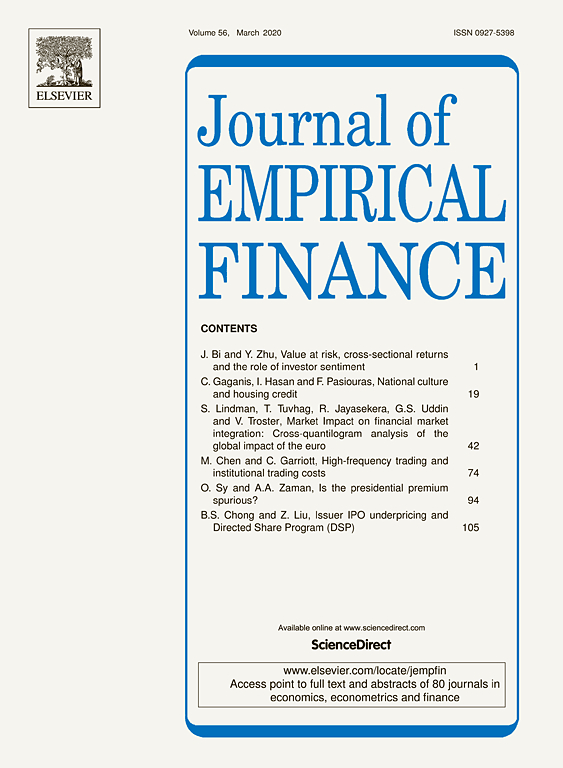
Herding Behavior and Systemic Risk in Global Stock Markets
in: Journal of Empirical Finance, September 2023
Abstract
This paper provides new evidence of herding due to non- and fundamental information in global equity markets. Using quantile regressions applied to daily data for 33 countries, we investigate herding during the Eurozone crisis, China’s market crash in 2015–2016, in the aftermath of the Brexit vote and during the Covid-19 Pandemic. We find significant evidence of herding driven by non-fundamental information in case of negative tail market conditions for most countries. This study also investigates the relationship between herding and systemic risk, suggesting that herding due to fundamentals increases when systemic risk increases more than when driven by non-fundamentals. Granger causality tests and Johansen’s vector error-correction model provide solid empirical evidence of a strong interrelationship between herding and systemic risk, entailing that herding behavior may be an ex-ante aspect of systemic risk, with a more relevant role played by herding based on fundamental information in increasing systemic risk.
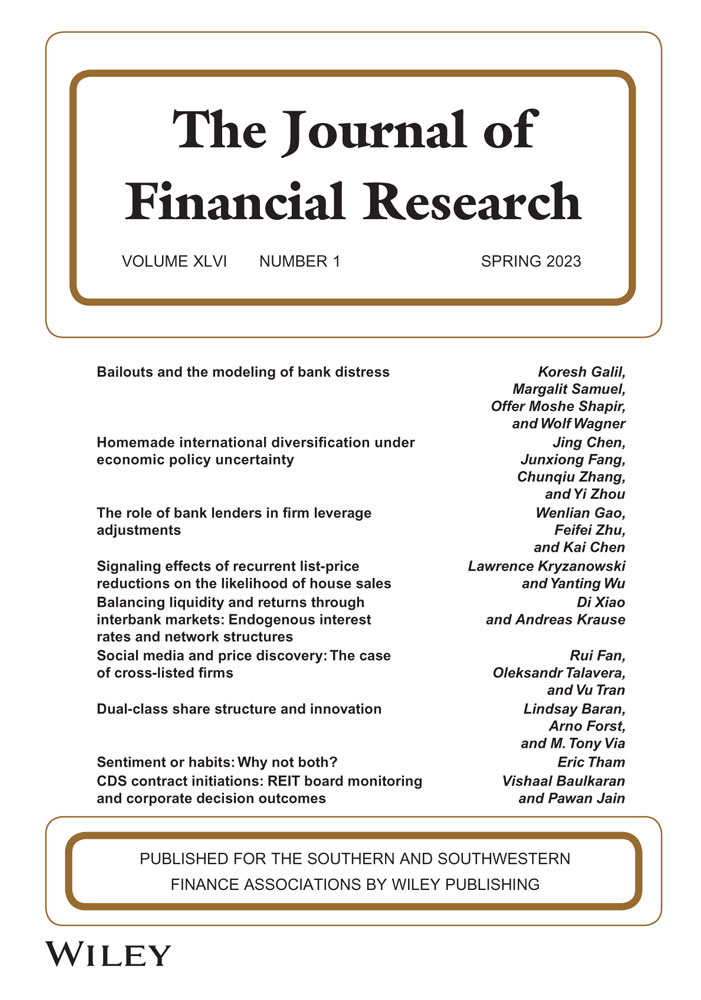
Market-implied Ratings and Their Divergence from Credit Ratings
in: Journal of Financial Research, No. 2, 2023
Abstract
In this article, we investigate the divergence between credit ratings (CRs) and Moody's market-implied ratings (MIRs). Our evidence shows that rating gaps provide incremental information to the market regarding issuers' default risk over CRs alone in the short horizon and outperform CRs over extended horizons. The predictive ability of rating gaps is greater for more opaque and volatile issuers. Such predictability was more pronounced during the 2008 financial crisis but weakened in the post-Dodd-Frank Act period. This finding is consistent with credit rating agencies' efforts to improve their performance when facing regulatory pressure. Moreover, our analysis identifies rating-gap signals that do (do not) lead to subsequent Moody's actions to place issuers on negative outlook and watchlists. We find that negative signals from MIR gaps have a real economic impact on issuers' fundamentals such as profitability, leverage, investment, and default risk, thus supporting the recovery-efforts hypothesis.
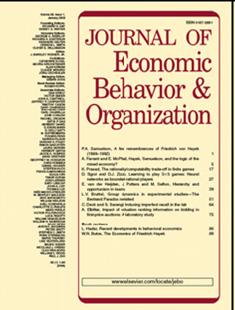
Correlation Scenarios and Correlation Stress Testing
in: Journal of Economic Behavior and Organization, January 2023
Abstract
We develop a general approach for stress testing correlations of financial asset portfolios. The correlation matrix of asset returns is specified in a parametric form, where correlations are represented as a function of risk factors, such as country and industry factors. A sparse factor structure linking assets and risk factors is built using Bayesian variable selection methods. Regular calibration yields a joint distribution of economically meaningful stress scenarios of the factors. As such, the method also lends itself as a reverse stress testing framework: using the Mahalanobis distance or Highest Density Regions (HDR) on the joint risk factor distribution allows to infer worst-case correlation scenarios. We give examples of stress tests on a large portfolio of European and North American stocks.

Cryptocurrency Volatility Markets
in: Digital Finance, No. 3, 2021
Abstract
By computing a volatility index (CVX) from cryptocurrency option prices, we analyze this market’s expectation of future volatility. Our method addresses the challenging liquidity environment of this young asset class and allows us to extract stable market implied volatilities. Two alternative methods are considered to compute volatilities from granular intra-day cryptocurrency options data, which spans over the COVID-19 pandemic period. CVX data therefore capture ‘normal’ market dynamics as well as distress and recovery periods. The methods yield two cointegrated index series, where the corresponding error correction model can be used as an indicator for market implied tail-risk. Comparing our CVX to existing volatility benchmarks for traditional asset classes, such as VIX (equity) or GVX (gold), confirms that cryptocurrency volatility dynamics are often disconnected from traditional markets, yet, share common shocks.
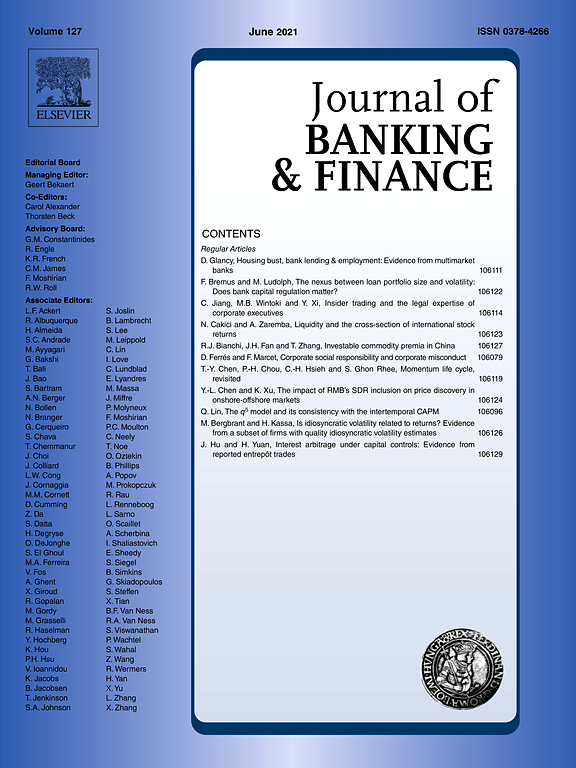
A Factor-model Approach for Correlation Scenarios and Correlation Stress Testing
in: Journal of Banking and Finance, April 2019
Abstract
In 2012, JPMorgan accumulated a USD 6.2 billion loss on a credit derivatives portfolio, the so-called “London Whale”, partly as a consequence of de-correlations of non-perfectly correlated positions that were supposed to hedge each other. Motivated by this case, we devise a factor model for correlations that allows for scenario-based stress testing of correlations. We derive a number of analytical results related to a portfolio of homogeneous assets. Using the concept of Mahalanobis distance, we show how to identify adverse scenarios of correlation risk. In addition, we demonstrate how correlation and volatility stress tests can be combined. As an example, we apply the factor-model approach to the “London Whale” portfolio and determine the value-at-risk impact from correlation changes. Since our findings are particularly relevant for large portfolios, where even small correlation changes can have a large impact, a further application would be to stress test portfolios of central counterparties, which are of systemically relevant size.
Working Papers
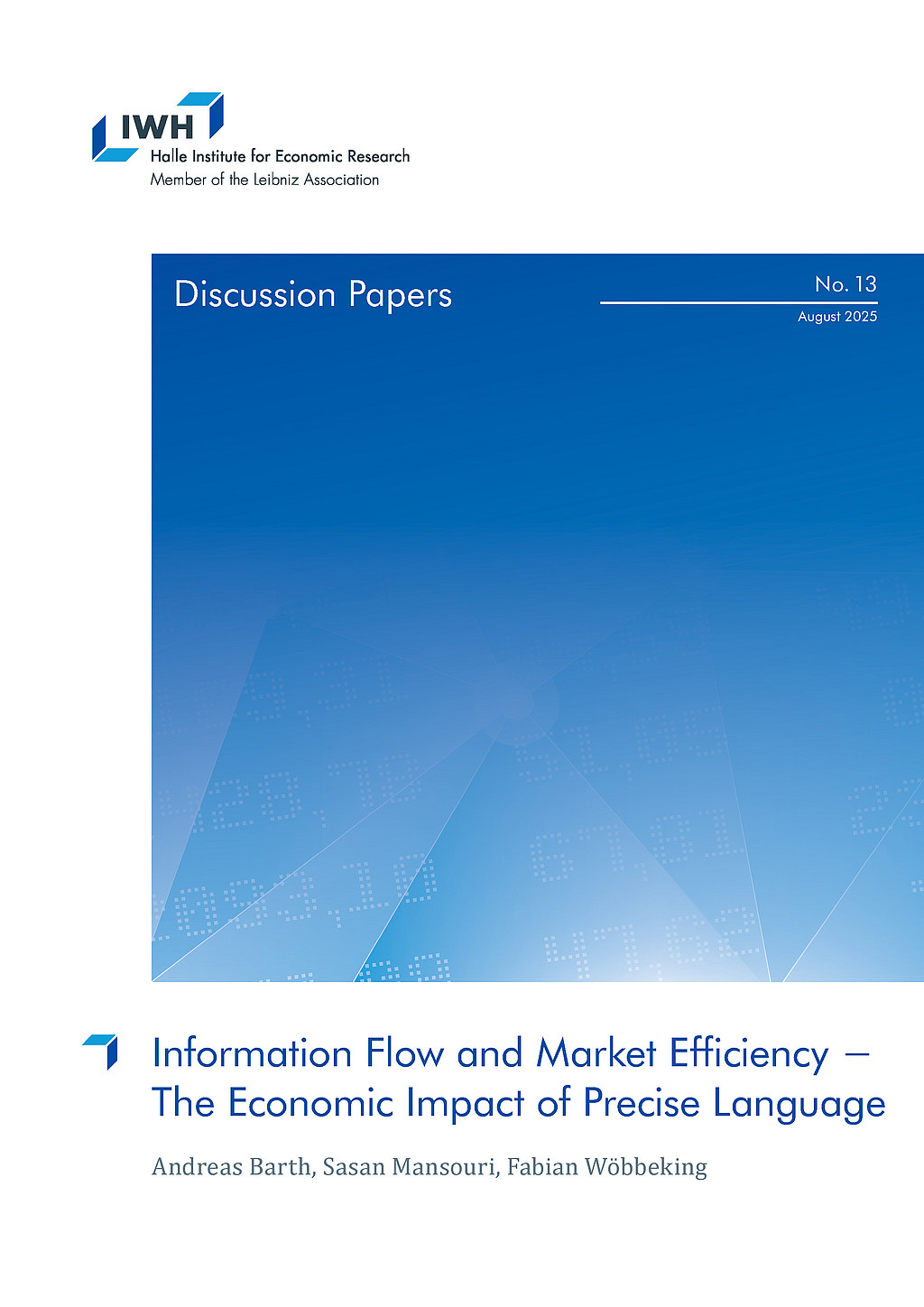
Information Flow and Market Efficiency - The Economic Impact of Precise Language
in: IWH Discussion Papers, No. 13, 2025
Abstract
<p>This paper examines the impact of complex yet precise language, particularly financial jargon, on information dissemination and ultimately market efficiency. As a natural laboratory, we analyze the information exchanged during earnings conference calls, where we instrument jargon with the Plain Writing Act of 2010. Our findings suggest that the Act‘s promotion of plain language usage results in a reduction in complex financial jargon for US firms. However, in contrast to the presumed benefits of accessible language, this reduction in jargon is associated with a decrease in market efficiency, implying that the Act may inadvertently hinder information flow. This finding is particularly important at the juncture where human-generated information is received by machines, which are known to be vunerable to ambiguous inputs.</p>
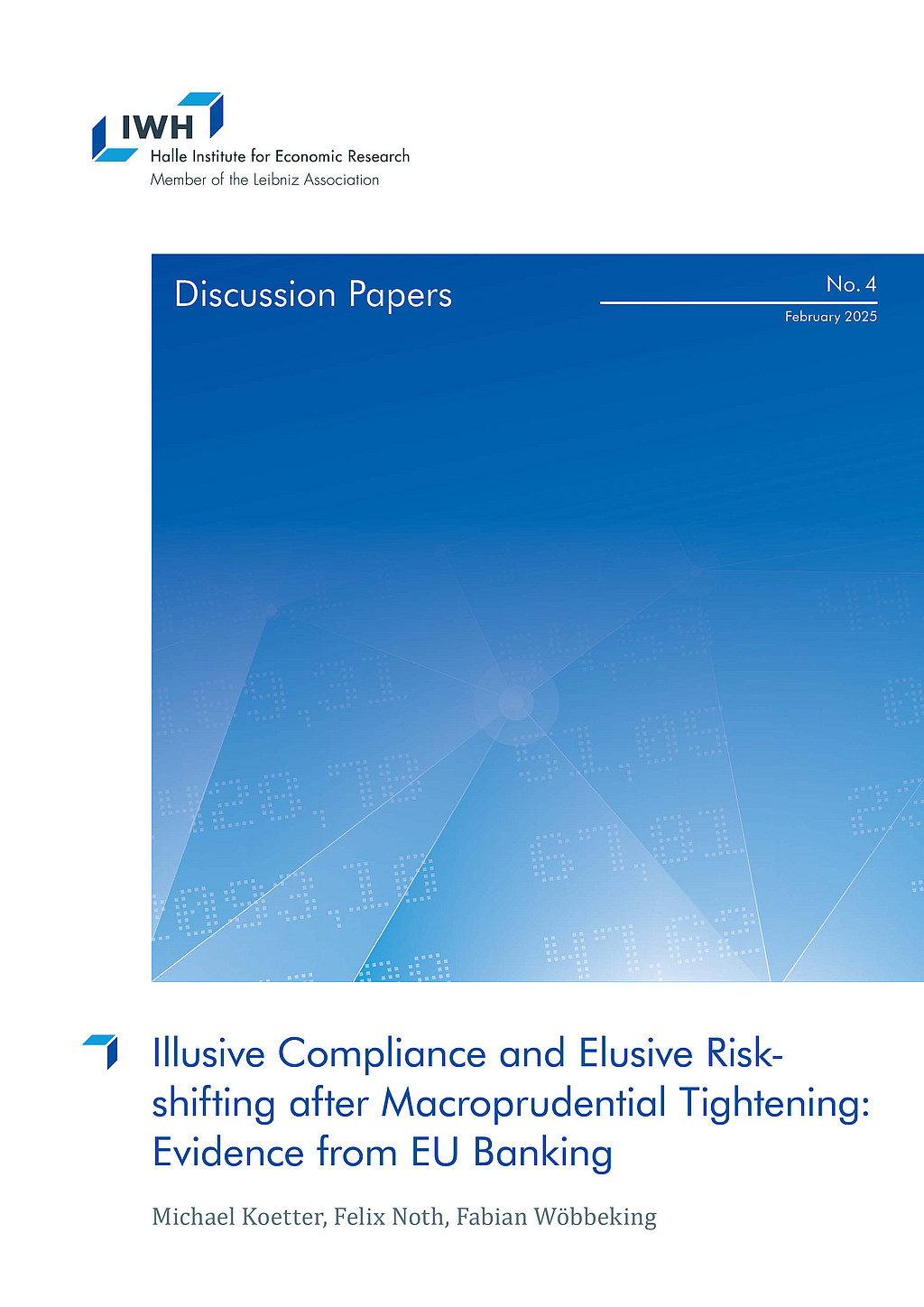
Illusive Compliance and Elusive Risk-shifting after Macroprudential Tightening: Evidence from EU Banking
in: IWH Discussion Papers, No. 4, 2025
Abstract
<p>We study whether and how EU banks comply with tighter macroprudential policy (MPP). Observing contractual details for more than one million securitized loans, we document an elusive risk-shifting response by EU banks in reaction to tighter loan-to-value (LTV) restrictions between 2009 and 2022. Our staggered difference-in-differences reveals that banks respond to these MPP measures at the portfolio level by issuing new loans after LTV shocks that are smaller, have shorter maturities, and show a higher collateral valuation while holding constant interest rates. Instead of contracting aggregate lending as intended by tighter MPP, banks increase the number and total volume of newly issued loans. Importantly, new loans finance especially properties in less liquid markets identified by a new European Real Estate Index (EREI), which we interpret as a novel, elusive form of risk-shifting.</p>

How to Talk Down Your Stock Performance
in: SSRN Discussion Papers, 2020
Abstract
We process the natural language of verbal firm disclosures in order to study the use of context specific language or jargon and its impact on financial performance. We observe that, within the Q&A of earnings conference calls, managers use less jargon in responses to tougher questions, and after a quarter of bad economic success. Moreover, markets interpret the lack of precise information as a bad signal: we find lower cumulative abnormal returns and a higher implied volatility following earnings calls where managers use less jargon. These results support the argument that context specific language or jargon helps to efficiently and precisely transfer information.










